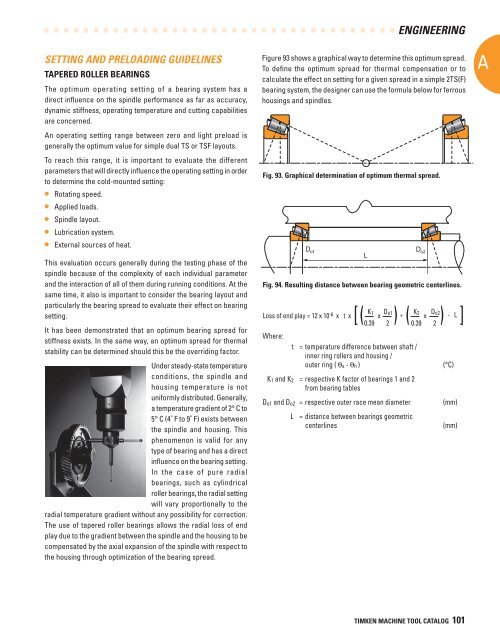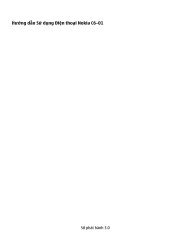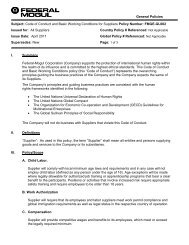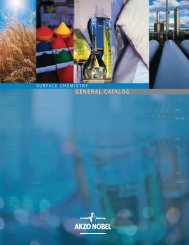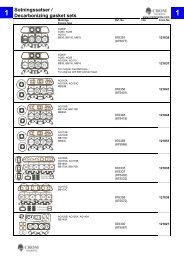Create successful ePaper yourself
Turn your PDF publications into a flip-book with our unique Google optimized e-Paper software.
SETTING AND PRELOADING GUIDELINES<br />
TAPERED ROLLER BEARINGS<br />
The optimum operating setting of a bearing system has a<br />
direct influence on the spindle per<strong>for</strong>mance as far as accuracy,<br />
dynamic stiffness, operating temperature and cutting capabilities<br />
are concerned.<br />
An operating setting range between zero and light preload is<br />
generally the optimum value <strong>for</strong> simple dual TS or TSF layouts.<br />
To reach this range, it is important to evaluate the different<br />
parameters that will directly influence the operating setting in order<br />
to determine the cold-mounted setting:<br />
• Rotating speed.<br />
• Applied loads.<br />
• Spindle layout.<br />
• Lubrication system.<br />
• External sources of heat.<br />
This evaluation occurs generally during the testing phase of the<br />
spindle because of the complexity of each individual parameter<br />
and the interaction of all of them during running conditions. At the<br />
same time, it also is important to consider the bearing layout and<br />
particularly the bearing spread to evaluate their effect on bearing<br />
setting.<br />
It has been demonstrated that an optimum bearing spread <strong>for</strong><br />
stiffness exists. In the same way, an optimum spread <strong>for</strong> thermal<br />
stability can be determined should this be the overriding factor.<br />
Under steady-state temperature<br />
conditions, the spindle and<br />
housing temperature is not<br />
uni<strong>for</strong>mly distributed. Generally,<br />
a temperature gradient of 2° C to<br />
5° C (4˚ F to 9˚ F) exists between<br />
the spindle and housing. This<br />
phenomenon is valid <strong>for</strong> any<br />
type of bearing and has a direct<br />
influence on the bearing setting.<br />
In the case of pure radial<br />
bearings, such as cylindrical<br />
roller bearings, the radial setting<br />
will vary proportionally to the<br />
radial temperature gradient without any possibility <strong>for</strong> correction.<br />
The use of tapered roller bearings allows the radial loss of end<br />
play due to the gradient between the spindle and the housing to be<br />
compensated by the axial expansion of the spindle with respect to<br />
the housing through optimization of the bearing spread.<br />
D o1<br />
L<br />
ENGINEERING<br />
Figure 93 shows a graphical way to determine this optimum spread.<br />
To define the optimum spread <strong>for</strong> thermal compensation or to<br />
calculate the effect on setting <strong>for</strong> a given spread in a simple 2TS(F)<br />
bearing system, the designer can use the <strong>for</strong>mula below <strong>for</strong> ferrous<br />
housings and spindles.<br />
Fig. 93. Graphical determination of optimum thermal spread.<br />
Fig. 94. Resulting distance between bearing geometric centerlines.<br />
Loss of end play = 12 x 10 -6 x t x<br />
[ ( K1<br />
Where:<br />
t = temperature difference between shaft /<br />
inner ring rollers and housing /<br />
outer ring ( θ s - θ h )<br />
K 1 and K 2 = respective K factor of bearings 1 and 2<br />
from bearing tables<br />
D o1 and D o2 = respective outer race mean diameter<br />
L = distance between bearings geometric<br />
centerlines<br />
D o2<br />
x<br />
) ( Do2)<br />
Do1 + K2 x<br />
]<br />
- L 0.39 2 0.39 2<br />
(°C)<br />
(mm)<br />
(mm)<br />
A<br />
TIMKEN MACHINE TOOL CATALOG 101


